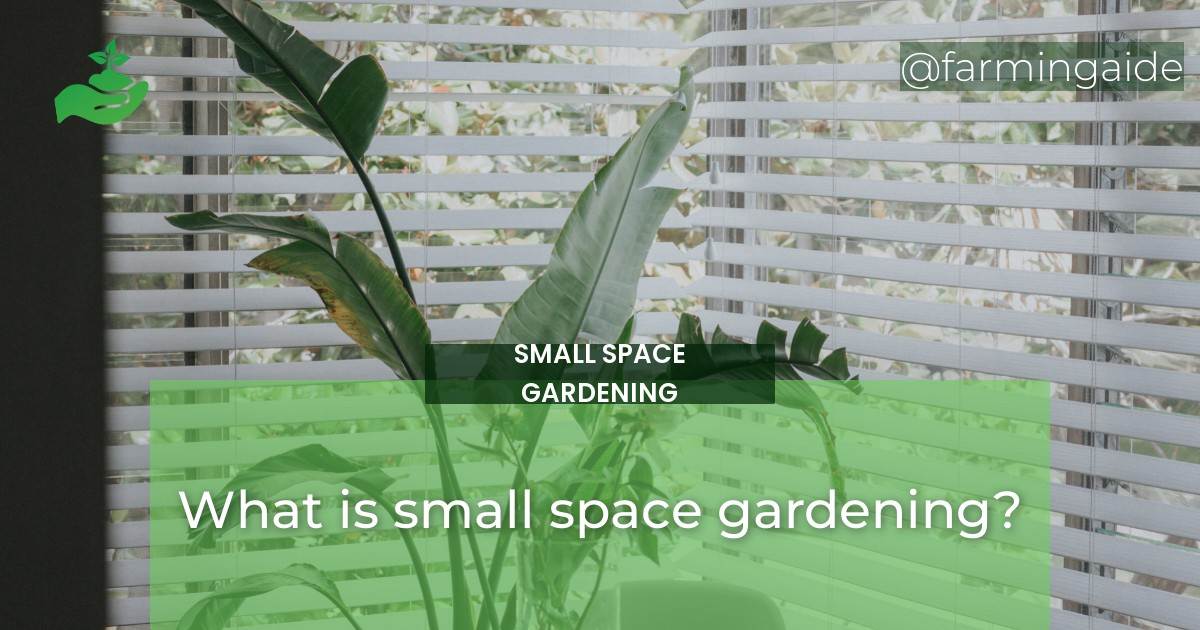Small space gardening is the art and science of growing plants in limited space. It involves the use of containers, raised beds, and vertical structures to maximize the growing area. With the increase in urbanization, many people are now living in apartments, condos, and small homes without access to large yards. Small space gardening provides an opportunity for such individuals to grow their own food, flowers, and herbs. This type of gardening requires creativity, planning, and patience, but it allows individuals to have fresh produce at their fingertips.
Benefits of small space gardening
Small space gardening has numerous benefits to individuals and the environment. These benefits include:
- It allows individuals to grow their own food
- It provides an opportunity to connect with nature
- It helps to reduce the carbon footprint as it encourages the use of organic practices
- It helps to improve air quality by absorbing pollutants
- It provides a beautiful and relaxing environment
- It helps to reduce food waste as individuals can grow only what they need
Types of small space gardening
There are several types of small space gardening. These include:
Container gardening
Container gardening involves the use of containers such as pots, buckets, and barrels to grow plants. This type of gardening is ideal for individuals with limited space as it allows them to grow plants on balconies, patios, and rooftops. Container gardening requires the use of potting soil, which is lighter and has better drainage than garden soil.
Raised bed gardening
Raised bed gardening involves the use of a box or a frame filled with soil to grow plants. This type of gardening is ideal for individuals with limited mobility as it eliminates the need for bending and kneeling. Raised bed gardening allows individuals to control the soil quality and drainage, making it easy to grow healthy plants.
Vertical gardening
Vertical gardening involves growing plants on a vertical structure such as a wall, trellis, or fence. This type of gardening is ideal for individuals with limited horizontal space. Vertical gardening requires the use of climbing plants such as tomatoes, cucumbers, and beans.
ALSO READ
Tips for small space gardening
Small space gardening requires planning and creativity. Here are some tips to help you get started:
- Choose the right location for your garden. Consider factors such as sunlight, wind, and water source.
- Choose the right plants for your space. Consider factors such as space, light, and soil quality.
- Use high-quality soil and compost to provide your plants with the nutrients they need to grow.
- Use vertical space by growing climbing plants such as tomatoes, cucumbers, and beans.
- Use containers of different sizes and shapes to add interest to your garden.
- Water your plants regularly and feed them with organic fertilizer.
- Harvest your produce regularly to encourage more growth.
Conclusion
Small space gardening provides an opportunity for individuals to grow their own food, flowers, and herbs in limited space. It has numerous benefits to individuals and the environment, including reducing the carbon footprint, improving air quality, and reducing food waste. There are several types of small space gardening, including container gardening, raised bed gardening, and vertical gardening. Small space gardening requires planning and creativity, but it allows individuals to have fresh produce at their fingertips.


